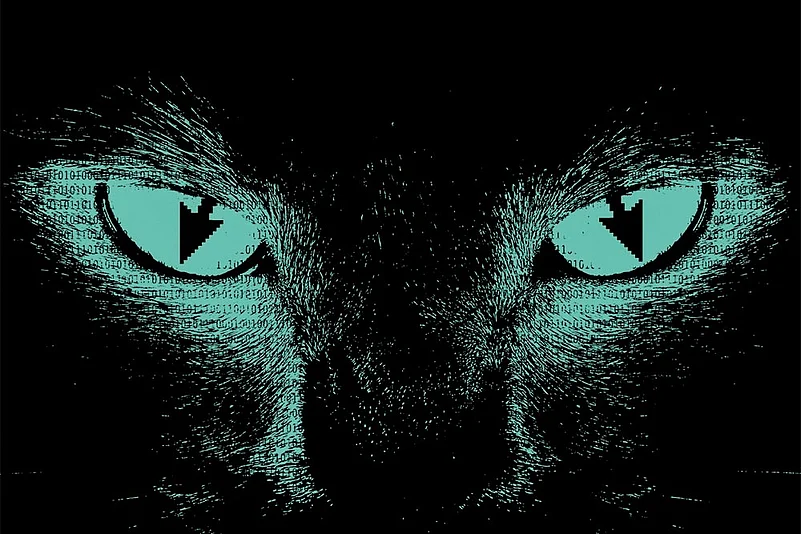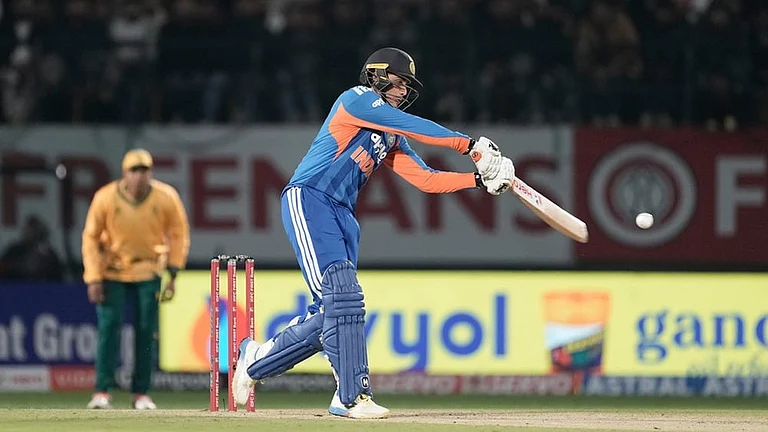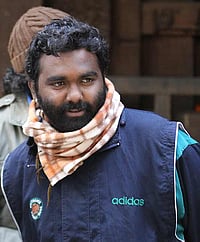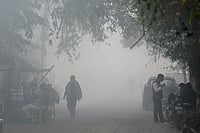This is an excerpt from an email that landed in 26-year-old Taruna Aswani’s inbox on October 21 this year. More than cringe-worthy at first glance, it goes without saying that this attempt at cyber blackmail is illegal. And yet, more and more such cases have been raising their ugly heads across the internet. They are difficult to investigate or reach their legal conclusion: a conviction.
Aswani’s case had been taken up by some news channels and it looked as if it was making progress. But, after three weeks, she tells Outlook that her case has just been transferring from one unit to another. “In Mumbai, they are not even ready to file my complaint,” says the 26-year-old who is currently working in Maryland in the US. She mentions that two complaints to the Internet Crime Branch in the US have failed too. “I’m so disappointed at how incompetent the system is, not just in India but here as well. By doing this (posting about the incident on Facebook) I was just standing up for myself instead of being a victim: I didn’t want to be a silent one. I wanted to fight him.” Aswani stresses on the “hope” she had while coming out with it, and now on the “constant feeling of fear, every minute of every day,” that she has to endure.
The internet age has brought in great democratisation of information, but it also has great capacity of misuse. And one doesn’t have to surf Agora or the Silk Road (darknet market operations) to witness this misuse, but only some forums and social media pages, which publish private pictures and videos of netizens in bulk. Almost all these pictures and videos are of women, sourced from their Facebook or Instagram page, or even obtained through a hack, from their mobile devices. Websites like xossip.com and masalaboard.com and Facebook pages like ‘Naughty Desi Girls’ have published thousands of such pictures for people to comment on. The remarks range from the generic “very cute pic” to varying degrees of unrestricted lewd talk. And not all of these pictures are ‘intimate’ or ‘revealing’ ones. It could be any picture with a woman in it—the photo of a wedding, a woman in a bus—and ‘dirty’, ‘locker room’ talk would follow in the threads below. The internet twists the idea of public space: while this barrage of content is being ‘pornographised’ in these forums, the subjects in those pictures remain oblivious to what is being made out of a ‘mere’ digital footprint. But there are collisions—an online world is, after all, a small one.

Sociologist Shiv Visvanathan likens the entire digital space to the idea of the city—“Grey areas, black areas and red light areas exist” which are unregulated and where “non-permissible behaviour exists in solidarity.” He says that the internet is “developing new shades of morality, or amorality”. Anja Kovacs, the founder of The Internet Democracy Project, who has been working with cases of cyber-bullying across north India, says while the law is in place, the police outside the non-metros “do not take such cases seriously.” She says that in Jharkhand and Haryana, for instance, the families do not want an FIR in the cases and the police do quite a bit of work “off the record and without an FIR”.
It is difficult to come out in these cases as it becomes a matter of public discussion. Kavita Krishnan, secretary of the All India Progressive Women’s Association, stresses on the stigma for someone “who has not signed up to have their identity exposed in a public way.” Jilted lovers and people “with a sense of ownership over women” do resort to such behaviour, she says, but the one who bears the brunt often only comes forward “with the assurance that their name will not be public.”
Coming out about it, however, does help, as it did for Aswani. Anusha Gopinath (name changed) is a 17-year-old who had just stepped into college. She made friends with a staff member and exchanged pictures on Facebook and Whatsapp. Her pictures were soon put up on other Facebook pages, went viral on Whatsapp and were morphed and put on other websites. After initial counselling, her parents backed her and the perpetrator was caught and booked, the photos removed.

Debarati Halder, an advocate, a cyber-counsellor and the managing director of the Centre For Cyber Victim Counselling in Tamil Nadu has worked on a number of such cases. She says that the victims live in the fear that the pictures may resurface. “Only about five per cent of the perpetrators get caught,” she says. She also mentions problems such as women being unable to co-operate with the authorities.
“If you have a smart-phone it is not just yours,” says Rakshit Tandon, a cyber-security expert and a consultant to the Internet and Mobile Association of India and the cyber-crime cells in Punjab and Haryana. He says even keeping private content on your phone is dangerous and prone to hacking. Tandon is helping out in the Aswani case and says that the information was taken from her cloud storage, which is “a permanent digital footprint”.
Most websites sourcing such content are predominantly hosted on servers abroad and need “legal interference”. Anup Giridhar, a cyber-crime investigator, agrees: “We can only request them and not force them to take down content. We try and do social engineering and there are ways to identify the culprit,” he adds, saying that a lot of people he knew had left the country after such ugly episodes.
In Noida, SP Dinesh Yadav heads the Centre for Cyber Crime Investigation, a state-of-the-art unit. In 2015, 780 cases of cyber-crime were recorded in the city. He acknowledges that most servers operate from outside India and that “trials take time”. “In case of such crimes, the sanctity of digital evidence is hard to maintain and requires special tools, which the police need training for,” he says. He adds that the process of a trial and conviction in a case abroad is long, with multiple stages involving courts, ministries and nodal agencies.
Yadav and Halder also mention that social media sites like Facebook refuse to take down such content at times. According to their guidelines, the material is not deemed defamatory at times, especially in cases where vernacular languages are used. Yadav says that a former Miss India had tried to take down a video of hers, which was being circulated widely on social media, but Facebook did not find any problem with it, so it did not remove it.
The buzzword more experts now use is “cyber-hygiene” and the need to keep your hands and phone clean of anything that might be used against someone in-any-which-way later. As Kovacs puts it: “We should develop the ability to know what to share, when, and with whom.”


























